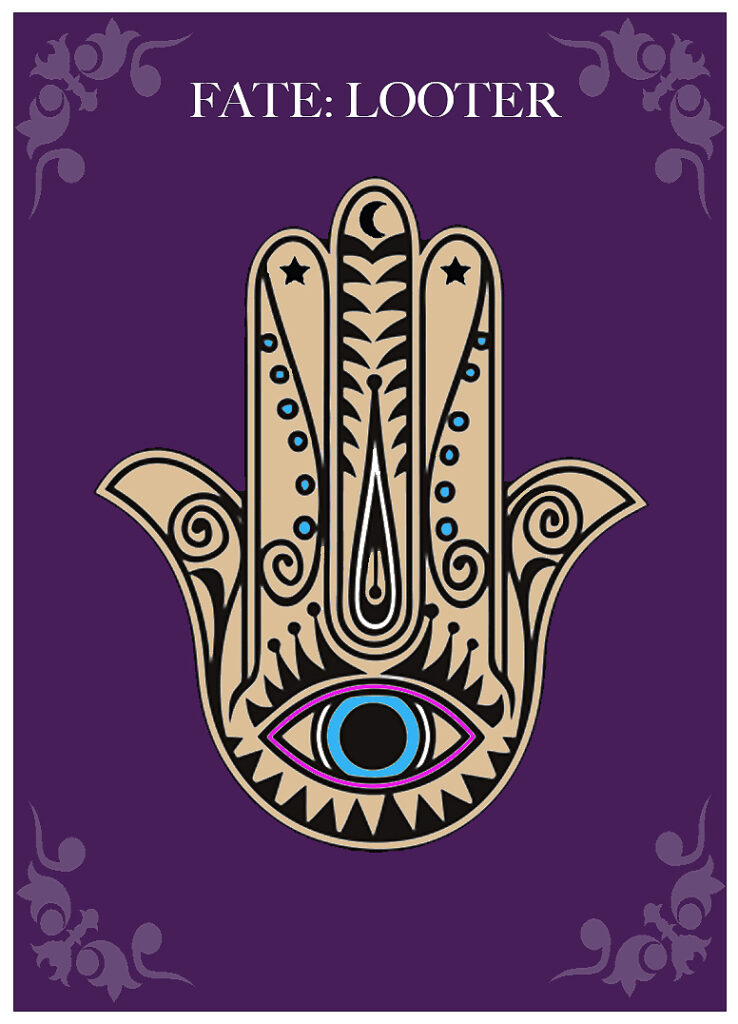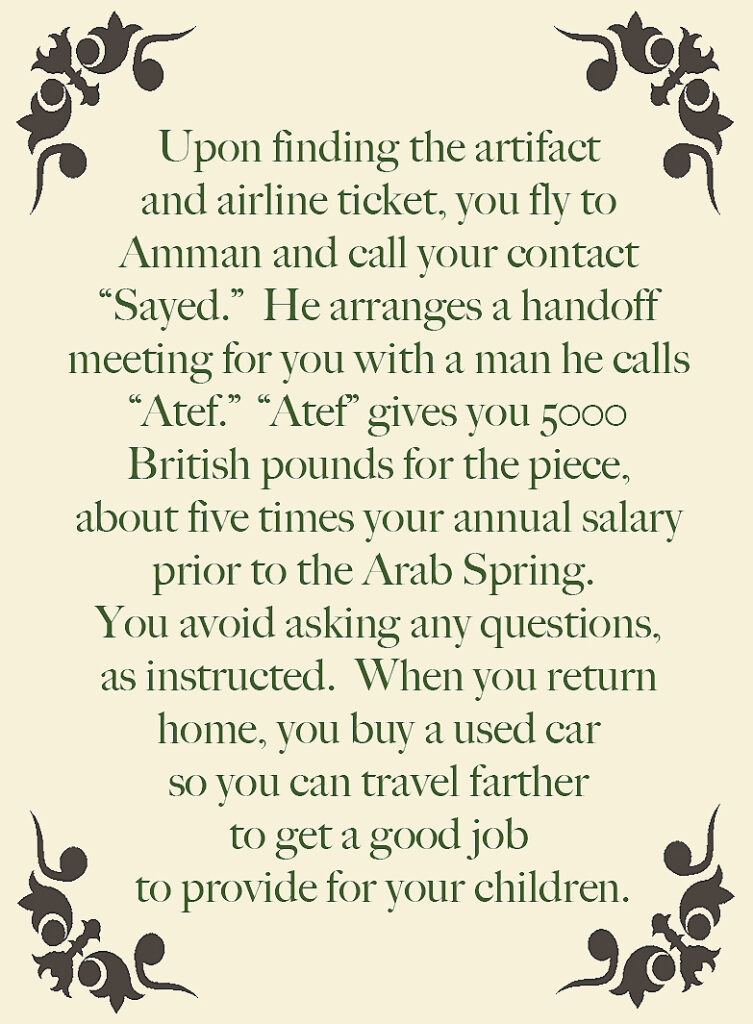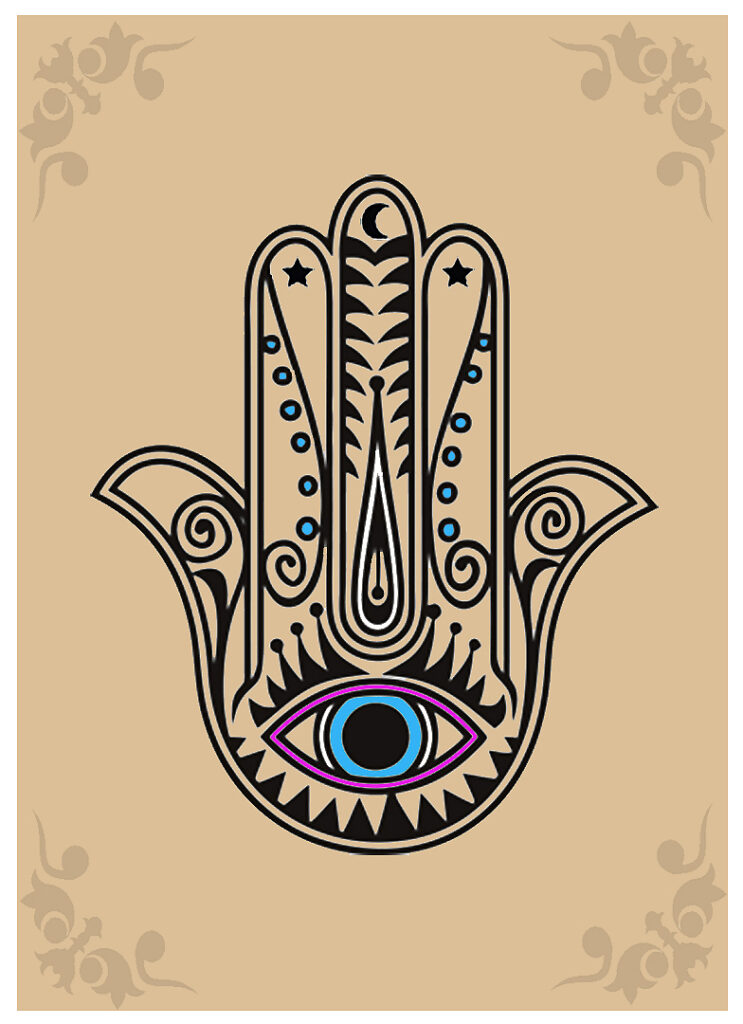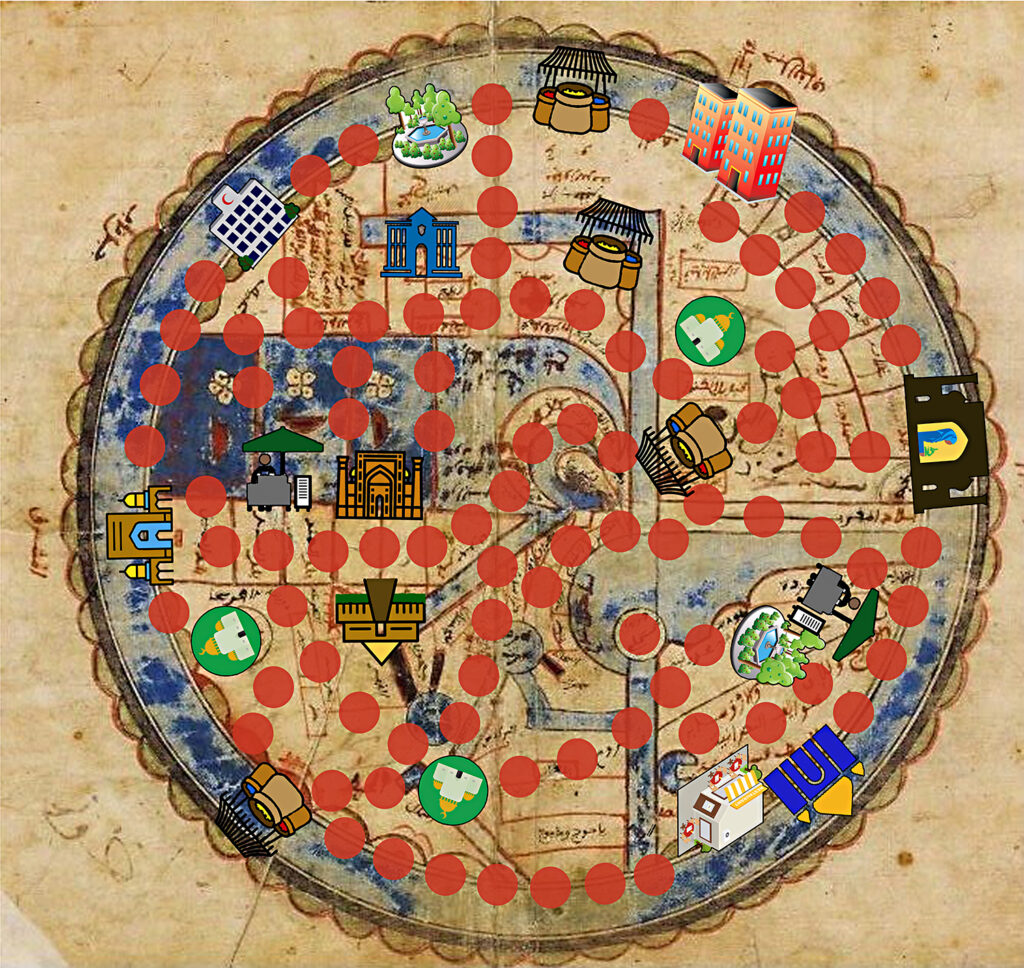2022
“Cult and Copper”/”Birth from Fire” – A VR cyber-archaeology game about smelting, shamanism, and goddess cults in the Ancient Near East
“Cult and Copper” was the media component of my PhD Dissertation, “Cult and Copper: Intra-Actions from the Bronze Age to A-Life.” “Cult and Copper” is an experiential intangible heritage game that explores the relationship among copper smelting, shamanism, and Hathor/Astarte goddess cults in the Bronze Age Levant.
Cyber-archaeology trends encourage the creation of multi-sensory projects that leverage the affordances of multi-media and strive to create embodied experiences. Few projects dare, however, to speculate about intangible heritage, such as craft, ritual, or techno-practices. “Cult and Copper” is a posthumanist, intra-active Virtual Reality game that suggests a relationship among Bronze Age copper smelting techniques, shamanism, and the Levantine goddess cults of Hathor (from Egypt) and Astarte (from Canaan). The game is set in Timna, a site in the Negev desert where ancient Egyptians, with the local Canaanite tribes, mined and produced copper. The goal of this single-player meditative game is to maintain a smelting fire with one’s breath and thus ensure a successful copper smelt. With the help and protection of the ancient Near Eastern goddess/es, the copper is “born” of the furnace as per ancient belief systems. “Cult and Copper” contributes new ways of enhancing a sense of immersion in a historical story via embodied interaction.
Deep sustained breathing techniques, such as those used in pranayama yoga, are associated with achieving altered states of consciousness. Early smelting methods, which employed blowpipes to heat smelting furnaces, also necessarily used deep and sustained breathing techniques. Thus this cyber-archaeology game probes, what if altered states manipulated by breath were one of the reasons shamanism and smelting were linked? This game is driven by pranayama breathing to facilitate embodied, experiential, immersive learning about ancient smelting in the Levant. In this game, I created a posthumanist design strategy to offer a relational, animistic approach to “intra-action.” Intra-actions break subject/object, human/non-human, nature/culture binaries. In this game, that means that fire, air, copper, animals with specific symbolisms to shaman-smelters, star constellations, people, and deities all have agential roles.
Over three years, I conducted historical research at archaeology sites in Israel and Cyprus and at museums in Israel, Cyprus, London, Pittsburgh (Pennsylvania) and San Jose (California). In doing this research I gathered media assets for worldbuilding the VR game. I authored design documents and then collaborated with Serious Games students at University of California to realize a playable prototype. Serious Games is part of the Computational Media, a subset of Engineering department. Special thanks to Team Timna collaborators: Amber Sargeant (Programmer/Technical Director), Wenbo Xie (3D modeler), Yichen Yao (2D art and sound), Yuanzhou Wu (producer and script co-writer), and industry mentor Steve Goodale.
For more information on this dissertation project, see the Research/Writing page of this site.
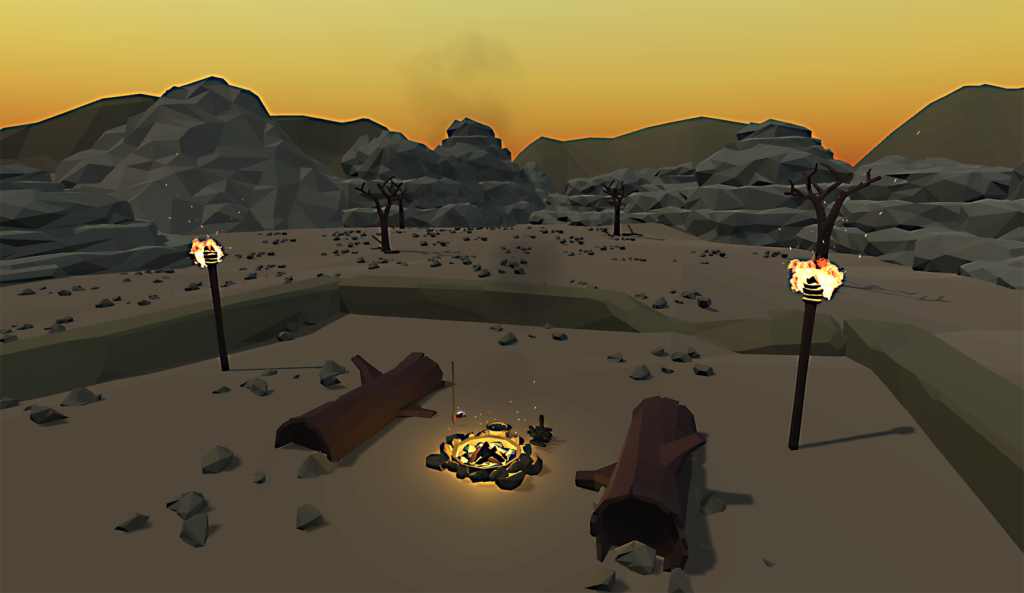

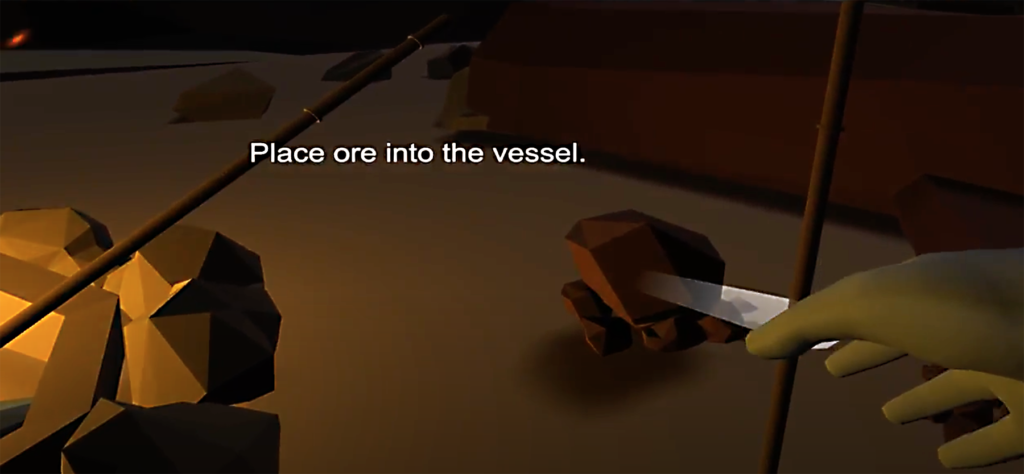
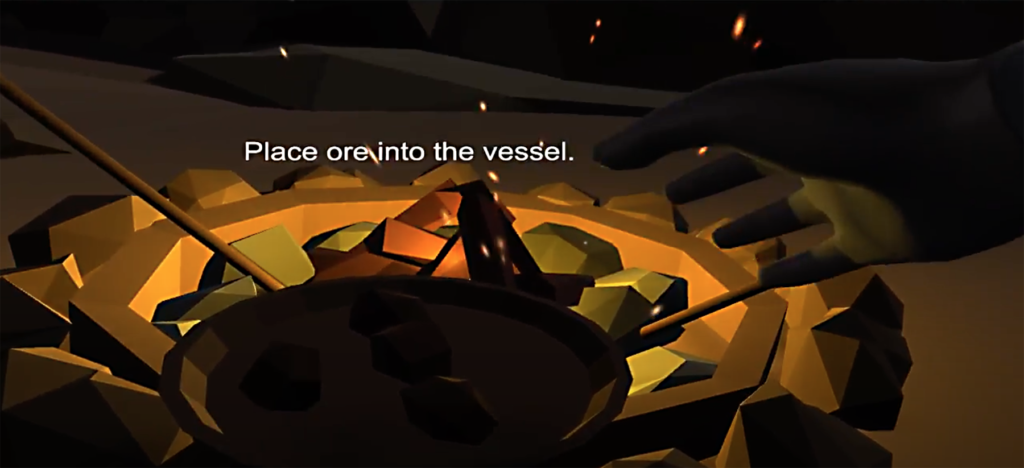


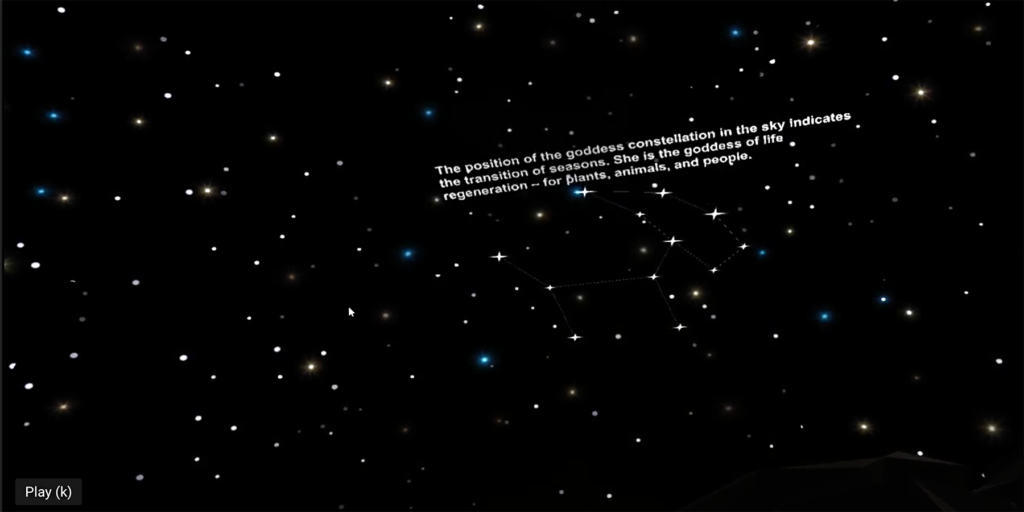
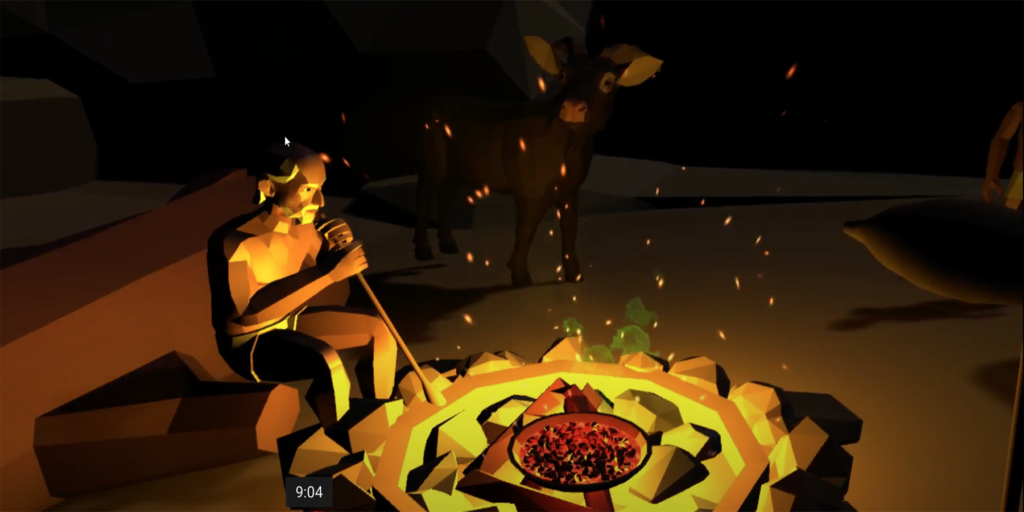
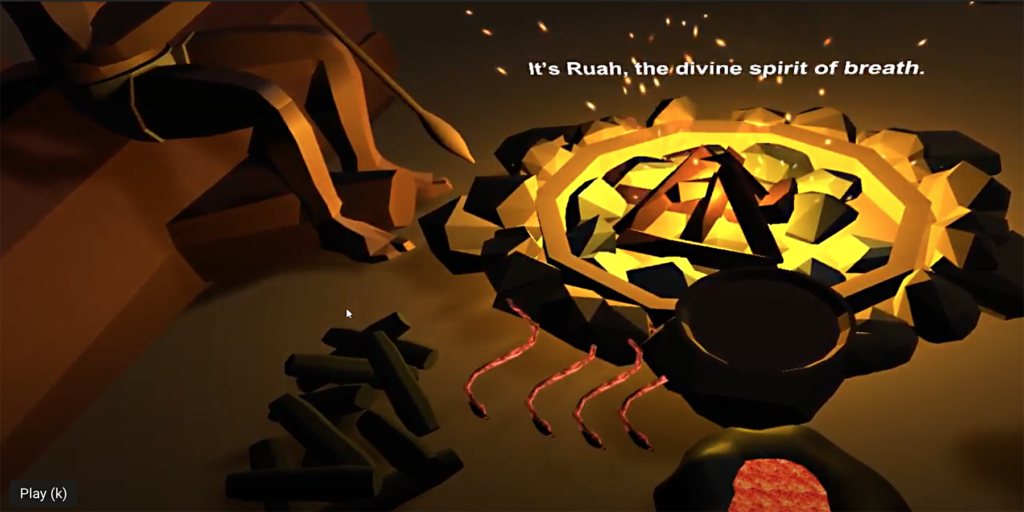
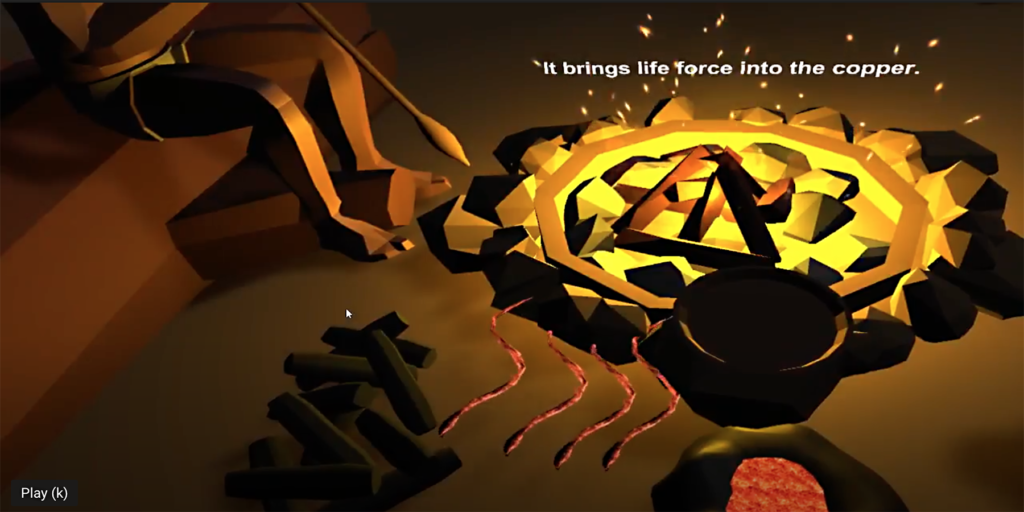
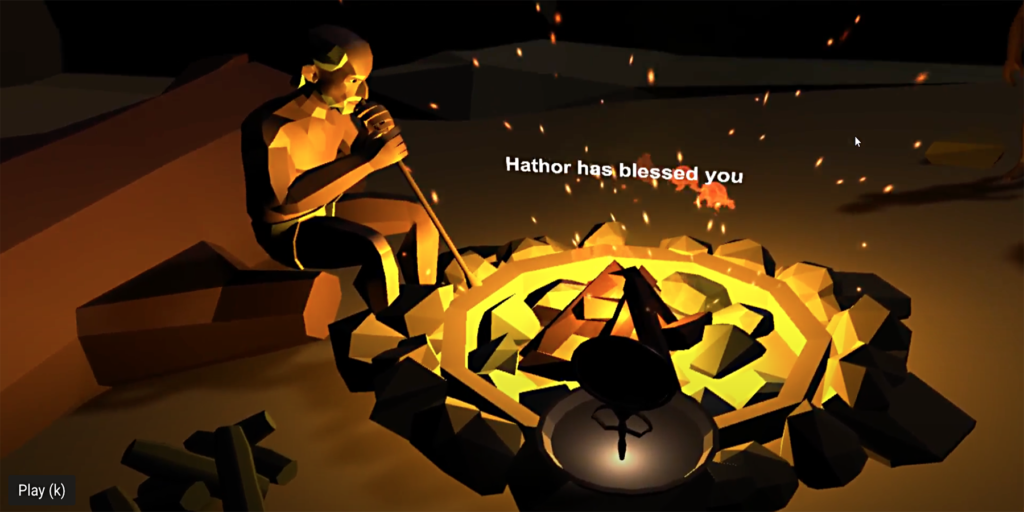
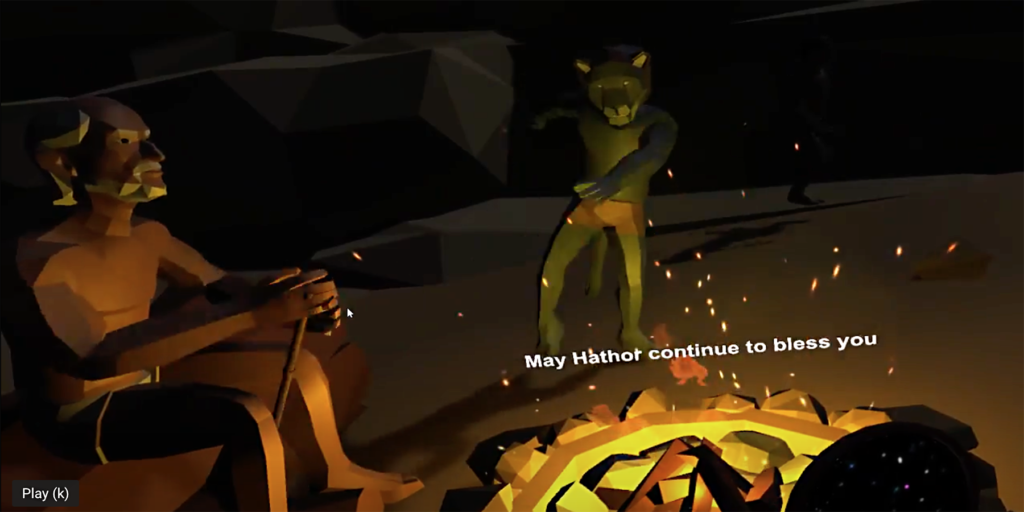
Cult and Copper (“Birth from Fire”) Prototype Demo April 2022: (https://vimeo.com/712485371) In-world game play demonstration of the virtual reality game Cult and Copper (Birth from Fire). Research, conceptual design and historical research by Casondra Sobieralski (UC Santa Cruz Film & Digital Media, Programming by Amber Sargeant, 3D modeling by Wenbo Xie, 2D art and sound by Yichen Yao, producer and script co-writer Yuanzhou Wu (UCSC Serious Games, Computational Media)
2017
“Practice Arabic with Wadi Rum Camels–A VR Learning Adventure”
This game uses 360-degree video immersion to practice Arabic language skills. The game can be adapted to different levels of language learning. As a sample, here are instructions for intermediate Arabic students:
Level 2 is designed for students who have completed at least one year of college-level language study. These students know how to read and write Arabic script of course, and they have studied basic grammar rules for nouns, verbs, adjectives, possessive forms, and ildolfas (noun-adjective phrases such as, “the blue house of the professor”).
GENERAL RULES FOR LEVEL 2, PART 1:
This is a game for teams of two people each.
Each team needs a VR headset (Google Cardboard, Oculus Rift, Vive, et cetera), so the number of teams is limited only by the number of headsets.
Each team consists of 1 player wearing the headsets, reporting observations and 1 “note taker.”
The person wearing the headset lists as many verbs, nouns, and adjectives as s/he can observe and articulate during the span of the VR experience. Meanwhile, the “note taker” records these articulations.
When the 360 video is over, the first player removes the headset to join the “note taker” in collaboration. This is where the levels diverge.
RULES for LEVEL 2, PART 2 (for serious students of Arabic who have mastered basic grammar rules):
The two-person teams work together to race the clock to solve grammar problems.
Teams have 20 minutes measured by a timer.
Teams may use dictionaries, grammar guides, and other resources. HOWEVER, to ensure fairness, teams must agree to the same tools before the game begins.
GAME EXERCISES
1) For each verb listed:
a) Identify the verb form I-XI.
b) Conjugate the present tense and past tense of the verb and list the infinitive.
2) For each noun listed in your native language:
a) Translate it into Arabic using the singular, dual, and plural form (feminine).
b) Form the possessive of the noun in the nahnu (“our”) form.
3) Use any two nouns from your list that make sense together to create an ildolfa. For example, “the sack of the camel/the camel’s sack.”
4) For each adjective listed:
a) list the feminine and the masculine form
b) list the plural form (feminine)
c) create a definitive noun-adjective phrase using the adjective (ex: the big book).
TIP: Remember all non-human plurals are treated as singular and feminine.
SCORING SYSTEM
For each complete and correct exercise:
- Verbs=15 points
- Noun exercises=10 points
- Ildolfas=5 point,
- Adjectives=3 points
The game ends when the first team reaches 100 points to win, or when the timer goes off, whichever comes first.
In the later case, the team with the most points at that time wins!
“Art Spy”: A Documentary Board Game About Cultural Heritage Protection
“Art Spy” is a game of chance and choices that takes players through the world of art and antiquities trafficking. It is a ladder race between two players to find a stolen antiquity hidden somewhere in a Middle Eastern city. The players are: 1) an “art spy” (an agent of a government antiquities authority), and 2) a middleman looter, trying to smuggle the antiquity over the border to the next gangster in the chain. Whoever reaches the antiquity first is “the winner,” but winning is not always the best fate. From the game instructions:
Background Information to Choose a Character
The “Art Spy”: The art detective has a career tracking stolen art and artifacts. She/he is given assignments that involve finding items on the Red Lists of Middle Eastern countries embroiled in war, revolution, or other conflict, namely Egypt, Syria, and Iraq.
For this assignment, the art detective is tasked with finding a stolen artifact believed to still be in a major city within its country of origin. The detective has been hired by the nation’s Antiquities Counsel with additional funds provided by a cultural heritage protection NGO. The detective’s task is to find this specified Red List artifact and return it to the Antiquities Inspector’s office before a middleman smuggler picks it up and smuggles it over the border, into the hands of a dangerous organized crime ring.
The “Looter”: The looter in this game has been unemployed since the early days of the Arab Spring. With the government in disarray, there are no economic safety nets left for him/her to fall back on. An acquaintance has offered him/her an enticing amount of cash simply by picking up a mysterious package from a secret “stash spot.” You have been assured that there are no drugs in the package, as getting caught with drugs could result in a physical penalty not worth the risk. Your assignment, should you choose to accept it, is to carry the package in your luggage on a flight to Amman, Jordan. Your round trip ticket and some travel expense cash are stashed with the package.
Once you land in Amman, you are to call a man named “Sayed” from a payphone. He will tell you where and when to meet your hand-off contact. You will stay in Amman for three days, a typical length of time for a business trip, so as not to arouse suspicion with booking agents.
This is all the information you are allowed. You suspect this assignment is tied to something shady due to all the odd secrecy, but you have four hungry children and a tired spouse at home. Clothes, school supplies, rent, and even food have become unaffordable. So if you take this role, you agree to the shady terms, no questions allowed.


